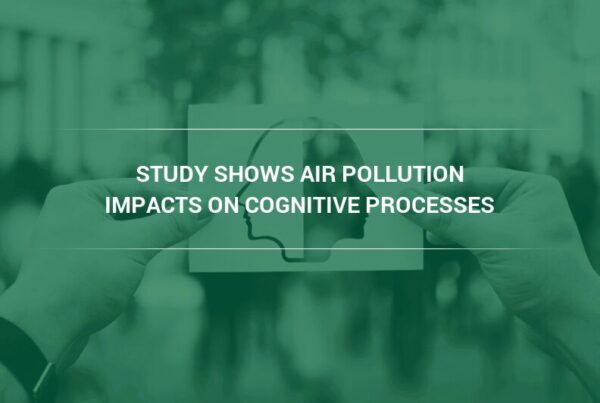New Study on The Link Between Air Pollution and Autism
A recent study suggests that improving indoor air quality may decrease the risk of developing autism disorder. Learn how home air filters can help.
According to a recent study of children in the Chinese city of Shanghai, exposure to fine particulate matter (PM2.5), which refers to particles no larger than 2.5 microns in diameter generated by car exhaust, industrial emissions, power generation, and other sources of air pollution increased their risk of developing autism spectrum disorder (ASD) by up to 78 percent. The findings suggest that home air filters may not just prevent respiratory and cardiovascular diseases, it may also reduce the risk of certain brain conditions like autism.
The study, published in the journal Environmental International, is the first to look at the connections between long-term exposure to air pollution and ASD in the early stages of growth and development among children living in a developing nation. The study saw the participation of 124 children with ASD and 1240 healthy children (as the control group) over a research period of nine years.
The study, however, is not the first to examine whether air pollution increases the risk of ASD, as previous studies have already spotted correlations between the two, albeit in prenatal stages of child development.
Connections Between Outdoor and Indoor Air Quality and ASD
While the causes of ASD are multi-faceted and not completely understood, scientists are beginning to recognize environmental factors like outdoor and indoor air quality in addition to other factors like genetics. The suggestion of links between particulate matter and ASD is particularly interesting, as PM has long been known to cause a wide range of health problems that go beyond respiratory and cardiovascular health.
“Below PM2.5, particles become more harmful because they penetrate deeper into the lung alveoli,” said Camfil USA’s Charlie Seyffer, Manager of Marketing & Technical Materials for commercial air filters and 37-year ASHRAE member and active committee participant. “They cross blood vessels walls, and can diffuse into the blood circulation to reach and affect an organs function.”
According to the study’s lead author, Dr. Zhiling Guo, the developing brains of young children are more susceptible to side effects caused by exposure to toxic substances in the environment, with several studies suggesting air pollution as having a detrimental effect on brain function and even the immune system.
He adds that these effects may explain why their study found such a strong link between air pollution and ASD. Still, Guo notes that the study’s results are far from conclusive and that more research has to be done to better understand the associations between air quality and mental health.
Home Air Purifiers Still a Good Way to Prevent Other Illnesses
Using home air purifiers and air filters to protect children from air pollution exposure and the plethora of health issues it causes is still a worthwhile investment for families. According to the World Health Organization (WHO), poor indoor air quality claims more than 3.8 million deaths every year—about 7.7 percent of the global annual mortality rate.
The usual culprits of poor indoor air quality include the burning of solid fuels in open hearths or cookstoves, the use of cleaning chemicals and disinfectants, and buildup of toxic gases like radon, which are naturally generated by soil and certain materials. Common types of indoor air pollutants include, but are not limited to, carbon monoxide, hydrocarbons, volatile organic compounds (VOCs), and particulate matter (PM).
Mitigating Particulate Matter Pollution with Home Air Purification Systems
Guo and his team specifically looked at the health effects of particulate matter—specifically, PM1, PM2.5, and PM10. These are fine particles in varying sizes generated by combustion processes in automobiles, trucks, factories, and power generation facilities, as well as construction activities and road dust. Much is already known about the health effects of particulate matter pollution exposure, so much so that home air purification systems have been specifically designed to capture and remove these particles from indoor spaces.
High Efficiency Filtration Systems and Fine PM
Likewise, it is also known that the smaller the particulate matter, the easier it will be for the particles to penetrate the lungs and cross into the bloodstream. It’s no surprise then why PM1, which refers to ultrafine particles, represents the greatest danger to human health, as they are small enough to reach the body’s vital organs, including the brain, which is where Guo’s research focused on. It’s this danger that drives demand for high efficiency filtration systems, which are proven to capture PM down to fine and ultrafine levels.
Despite this, Dr. Guo expressed concerns that there have been few studies done on PM1 and that government agencies have yet to set safety standards for this specific type of particle pollution. Worse, in developing countries and cities with little to no air quality standards, PM1 levels are especially high. In fact, Guo notes that PM1 pollution accounts for a staggering 80 percent of air pollution in China alone.
Bottom Line, Home Air Filtration Systems Are Worth It
While the jury is still out on whether air pollution indeed causes autism spectrum disorder, it’s clear that air quality has a massive impact on overall health and well-being. If anything, this proves that home air filtration systems are a worthwhile addition to any home.
Get in touch with Camfil USA to learn more about our home air filters and clean air solutions. Our team will be happy to answer all of your questions about maintaining good indoor air quality in homes, commercial buildings, offices, schools, hospitals, or any other facility.
Media Contact:
Lynne Laake
Camfil USA Air Filters
T: 888.599.6620
E: Lynne.Laake@camfil.com
F: Friend Camfil USA on Facebook
Y: Watch Camfil Videos on YouTube
Source:



